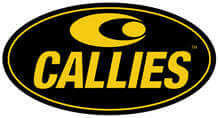
MS Access As A Dev Tool
Access continues to be a highly efficient tool for business database development.
The Best Microsoft Access Database Solutions owner, consultant, and principal programmer is Alison Balter - a recognized expert Microsoft Access consultant. Alison is the author of 15 Microsoft Access training books and videos. She is a frequent guest speaker at MS Access conferences and has developed hundreds of applications for businesses of all types.
We know your business data is important; we listen to your concerns, ask questions, and gather information from all stake holders. We discuss your needs and requirements for your database. We find out what you want, why you need various features so we can obtain as much information as possible. Once we have the information we need, we work with you to design the proper database architecture, plus the dashboards, the questions (queries), forms, and reports you need for an excellent database system.

We also create websites designed for speed to display your data accurately, using ASP.NET technology. Fast, secure, and robust, our ASP.NET web sites and web applications give you true business tool for finding and displaying information dynamically on the web.






Access continues to be a highly efficient tool for business database development.

How to create a Microsoft Access application with some unique tips and tricks.

Your Access developer near me has some great info for you about using Access efficiently.
Call MS Access Solutions at (323) 285-0939 For Complimentary Consultation
Working with the Property Sheet
After you have selected a form, click the Properties button on the toolbar to view its properties. The property sheet, shown in Figure 5.47, consists of five tabs: Format, Data, Event, Other, and All. Many developers prefer to view all properties at once on the All tab, but a form can have a total of 119 properties! Instead of viewing all 119 properties at once, try viewing the properties by category. The Format category includes all the physical attributes of the form—in other words, the ones that affect the form's appearance (such as background color, for example). The Data category includes all the properties of the data that the form is bound to, such as the form's underlying record source. The Event category contains all the Windows events to which a form can respond. For example, you can write code that executes in response to the form being loaded, becoming active, displaying a different record, and so on. The Other category holds a few properties that don't fit into the other three categories.Working with the Important Form Properties
As mentioned, forms have 67 properties and 52 events associated with them. Event properties are covered in Chapter 10. The following sections cover the Format, Data, and Other properties of forms.Format Properties of a Form
The Format properties of a form affect its physical appearance. Forms have 39 Format properties. Many of them are described here. • Caption—Sets the text that appears on the form's title bar. This property can be customized at runtime. For example, you could include the name of the current user or specify the name of the client for whom an invoice is being generated. • Default View—Allows you to select from 5 available options: • Single Form—Allows you to view only one record at a time. • Continuous Forms—Displays as many records as will fit within the form window at one time, each presented as the detail section of a single form. • Datasheet—Displays the records in a spreadsheet-like format, with the rows representing records and the columns representing fields. • Split Form — Displays the records in both a Single form and Datasheet view at the same time. You can easily move from record to record in the datasheet portion of the form. As you move from record to record in the datasheet, the detail of the record appears in the Single form section of the form. • PivotTable—Displays the records in a Microsoft Excel–type pivot table format. • PivotChart—Displays the records in a Microsoft Excel–type pivot chart format. The selected option becomes the default view for the form. Allow Form View—Prior to Access 2002, Access forms had a property called Views Allowed. The Views Allowed property determined whether the user was allowed to switch from Form view to Datasheet view, or vice versa. The Default View property determined the initial default display mode for the form, but Views Allowed determined whether the user was permitted to switch out of the default view.This material originally appeared in Alison Balter's book Mastering Microsoft Office Access 2007 Development. Reprinted here by author's permission.
When you need a Microsoft Access programmer for your Boston MA business, call MS Access Solutions at (323) 285-0939. We have over 25 years experience in Microsoft Access programmer solutions. We create Access database applications for all sectors, consisting of hospitals, government agencies, the U.S. military, universities, agriculture, workers services, and insurance provider. We can take care of the most advanced as well as complicated Access and also SQL Server database programming for your business as well as smaller projects, like fixing damaged Access database forms, MS Access reports, Access macros, and VBA code.
More Access programmer cities we serve: Access Programmer Baltimore MD

